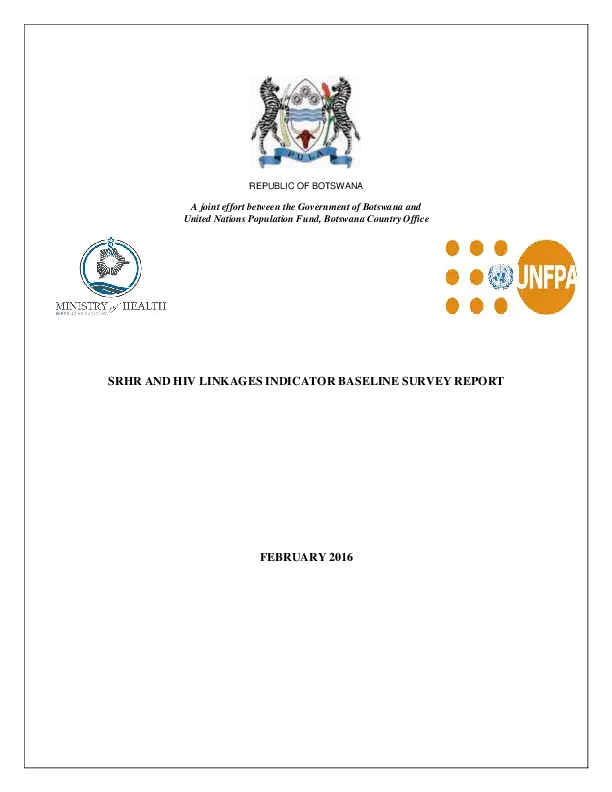Responding to global calls on national governments to intensify linkages between sexual and reproductive health and HIV at all levels the Africa region echoed similar sentiments through the ‘Maputo Plan of Action’ pleading with African states to “strengthen commitment towards achieving universal access to SRH services, including family planning. In pursuit of the same course, the African Union and Southern African Development Community adopted the plan of action in 2006 and 2010, respectively. The SADC region set itself a 50% target in reducing e new HIV infections by 2015. To achieve the target Botswana has enlisted the support of the European Union (EU), United Nations Population Fund (UNFPA) and United Nations Joint Programme on AIDS (UNAIDS) through instrumentation of the Ministry of Health (MoH) to conduct preliminary assessments on the linkages to inform plans in scaling up the linkages. This baseline survey was the second assessment that was conducted at national level, following a rapid assessment that sought to establish the national status of the service linkages. The survey was intended to determine the degree of attainment of indicators that were proposed for the implementation of envisaged SRHR and HIV linkages. Survey findings revealed three main conclusions: i) Health facility records monitor 7 out of the 9 proposed SRHR-HIV indicators, ii) Data management systems exist at all health facilities and iii) Midwives and Registered Nurses are the backbone of Sexual and Reproductive Health and HIV/AIDS services. Variable linkages were shown to exist for the monitored 7 proposed indicators with strongest linear linkages (more HIV services in SRH services points than the reverse) suggested for the following indicators: Percentage of ANC attendees who was tested for syphilis at first ANC visit Percentage of ANC attendees who tested positive for syphilis Percentage of HIV positive pregnant women who receive Anti-retroviral to reduce the risk of mother to child transmission Percentage of pregnant women who know their HIV status The two indicators that were either indirectly or not monitored at all are: i) Number of partners of HIV infected women provided with FP services and ii) Percentage of adults aged 15 – 49 who had more than one sexual partner in the past 12 months who reported the use of a condom during their last intercourse respectively. It is recommended that the existing SRH and HIV/AIDS Monitoring and Evaluation tools be reviewed to fine tune, consolidate and standardize them across health facilities. Further, it is recommended that the proposed indicator for which no monitoring data was available should be dropped from the list of proposed indicators. Survey findings were constrained by the data coverage short span of time (June to August 2015) and terminology inconsistencies between proposed indicators and records that might have compromised data accuracy.
WHO WE ARE
WHAT WE DO
SRHR AND HIV LINKAGES INDICATOR BASELINE SURVEY REPORT

Publisher
Number of pages
46
Author
A joint effort between the Government of Botswana and United Nations Population Fund, Botswana Country Office
Publications
SRHR AND HIV LINKAGES INDICATOR BASELINE SURVEY REPORT
Publication date
15 August 2016

